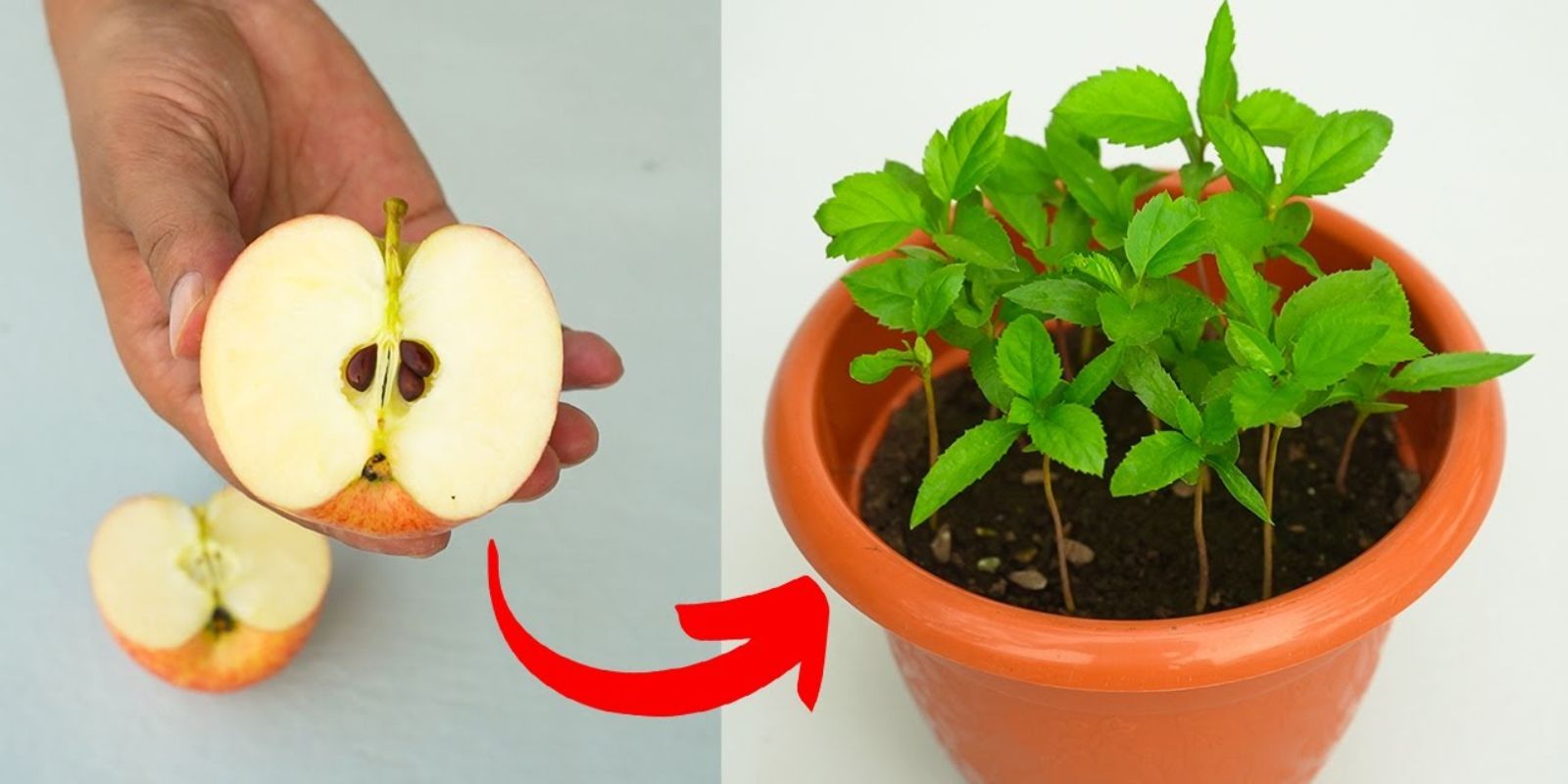Growing an apple tree from seed is a captivating and rewarding experience. It requires patience, dedication, and a love for nature. While the process may take years, the journey from planting a seed to enjoying your very own homegrown apples is worth every effort. This guide walks you through each step of the process, ensuring your apple tree thrives from seedling to fruitful maturity.
Why Grow an Apple Tree from Seed?
Growing an apple tree from seed is not just about producing fruit; it’s about nurturing life and connecting with the natural world. While apple trees grown from seeds may not always produce fruit identical to the parent apple, they are a testament to nature’s diversity. Whether for their beauty, shade, or delicious fruit, these trees become a source of pride for gardeners.
Step 1: Collecting and Preparing the Seeds
- Choose Your Apple:
- Start by selecting an apple variety you enjoy. Remember, the fruit your tree produces may differ due to genetic variation, but starting with a tasty apple increases your chances of success.
- Extract the Seeds:
- Cut open the apple and carefully remove the seeds.
- Clean the Seeds:
- Rinse the seeds under water to remove any leftover fruit flesh. Pat them dry with a paper towel.
- Prepare for Stratification:
- Apple seeds need a cold, moist period to mimic winter conditions. This process, known as stratification, helps seeds break dormancy and start germinating.
Step 2: Stratification Process
- Create the Right Environment:
- Place the seeds on a damp paper towel. Fold the towel to enclose the seeds, ensuring they remain moist but not soaked.
- Store the Seeds:
- Place the paper towel in a resealable plastic bag or airtight container. Store it in the refrigerator (not the freezer) for 6–8 weeks.
- Monitor Progress:
- Check the seeds periodically to ensure the towel remains moist. You may notice some seeds starting to sprout during this period.
Step 3: Planting the Seeds
- Choose the Right Soil:
- Use nutrient-rich, well-draining soil to plant your seeds. A mix of potting soil and compost works well.
- Plant in Pots:
- Fill small pots with soil, leaving about an inch of space at the top. Plant each seed about 1/2 inch deep and cover lightly with soil.
- Water Gently:
- Water the seeds carefully to moisten the soil without over-saturating it.
- Provide Sunlight:
- Place the pots in a sunny location, such as a windowsill. Seeds require warmth and light to germinate and grow.
Step 4: Caring for Seedlings
- Watch Them Sprout:
- Within a few weeks, you should see small seedlings emerge from the soil.
- Maintain Moisture:
- Keep the soil evenly moist but avoid waterlogging, which can harm the roots.
- Transplanting Seedlings:
- Once the seedlings are a few inches tall and have developed several leaves, they can be transplanted into larger pots or directly into your garden.
- Space Them Out:
- If planting outdoors, ensure the trees are spaced adequately to allow for full growth. A spacing of 20–30 feet is ideal for most apple varieties.
Step 5: Nurturing the Growing Tree
- Support Growth:
- Fertilize the tree with balanced fertilizer to provide essential nutrients. A nitrogen-rich fertilizer in the early stages promotes healthy leaf and stem growth.
- Prune Regularly:
- Pruning helps shape the tree and encourages strong branch development. Focus on removing weak, dead, or overcrowded branches.
- Protect the Tree:
- Young apple trees are vulnerable to pests and diseases. Use organic insecticides or natural deterrents like neem oil to protect your tree.
Step 6: Ensuring Pollination
- Plant Multiple Trees:
- Apple trees require cross-pollination for fruit production. Planting two or more apple trees of different varieties improves your chances of a bountiful harvest.
- Attract Pollinators:
- Encourage bees and other pollinators by planting flowers nearby or setting up a bee-friendly garden.
Step 7: Waiting for the First Harvest
- Patience is Key:
- Apple trees grown from seed can take 5–10 years to bear fruit. During this time, focus on providing consistent care and monitoring the tree’s health.
- First Fruits:
- When your tree finally produces apples, celebrate your hard work and dedication. These fruits may be unique, reflecting the genetic diversity of apple seeds.
Benefits of Growing an Apple Tree from Seed
- Cost-Effective:
- Growing from seed is more affordable than purchasing a sapling.
- Environmental Impact:
- Trees reduce carbon dioxide levels, provide oxygen, and support local wildlife.
- Personal Satisfaction:
- Watching a tree grow from seed to fruit-bearing maturity is a deeply fulfilling experience.
Tips for Success
- Start with More Seeds:
- Not all seeds will germinate, so planting several increases your chances of success.
- Monitor Soil Quality:
- Healthy soil is critical for robust tree growth. Test and amend your soil as needed.
- Be Persistent:
- Growing a tree from seed requires time and dedication, but the results are worth the wait.
Conclusion
Growing an apple tree from seed is a long but rewarding process that connects you with nature and teaches patience. By following these steps, you can turn a simple apple seed into a thriving tree that provides shade, beauty, and delicious fruit for years to come.
✨ Are you ready to grow your own apple tree? Share your journey and inspire others to plant a seed today! ✨
Viral Gardening Hashtags
#GrowAppleTree #SeedToFruit #AppleTreeJourney #OrganicGardening #HomeGarden #NatureConnection #TreeCareTips #FruitTreeLove #GardeningGoals #AppleHarvest

